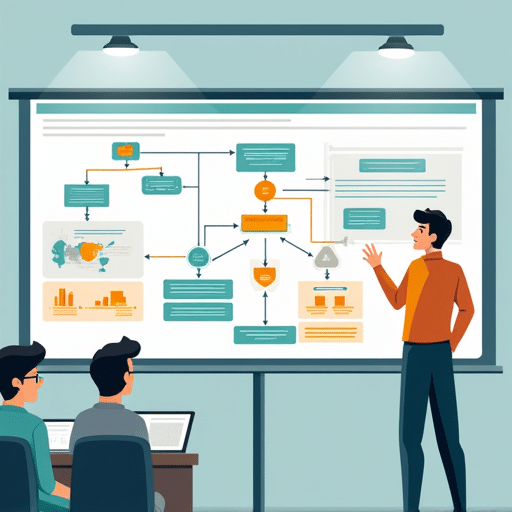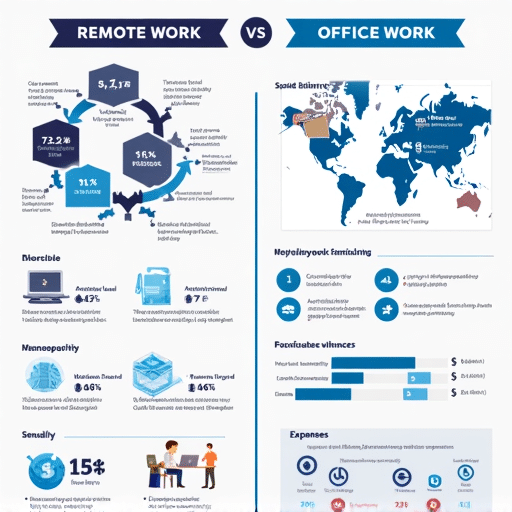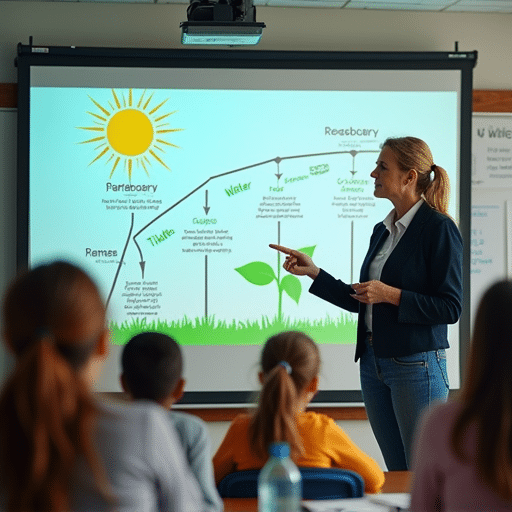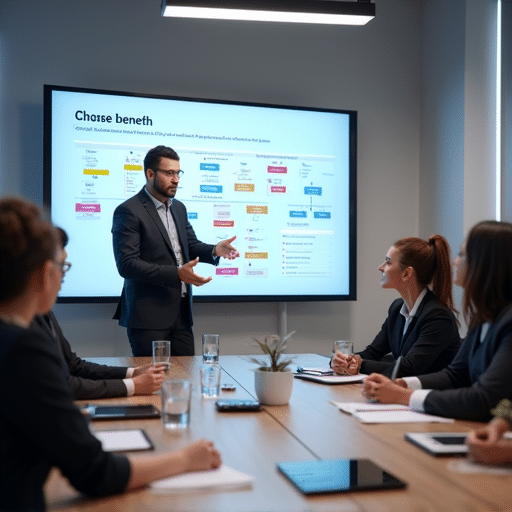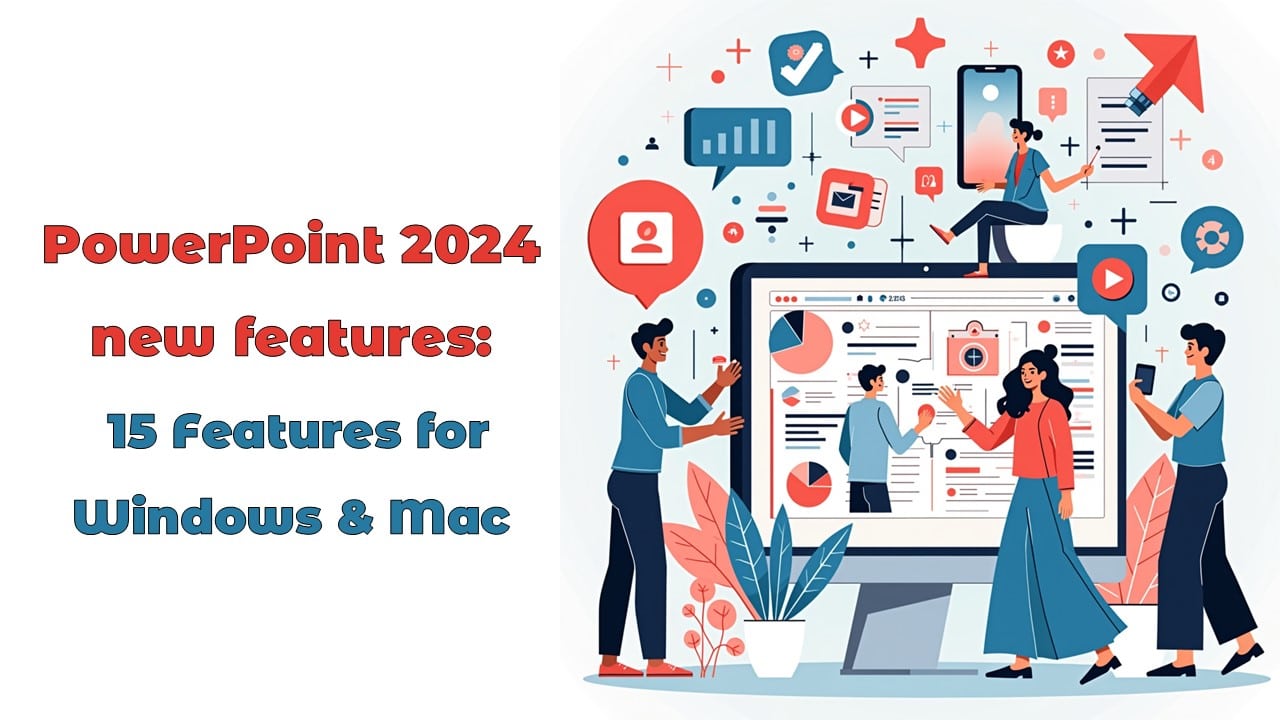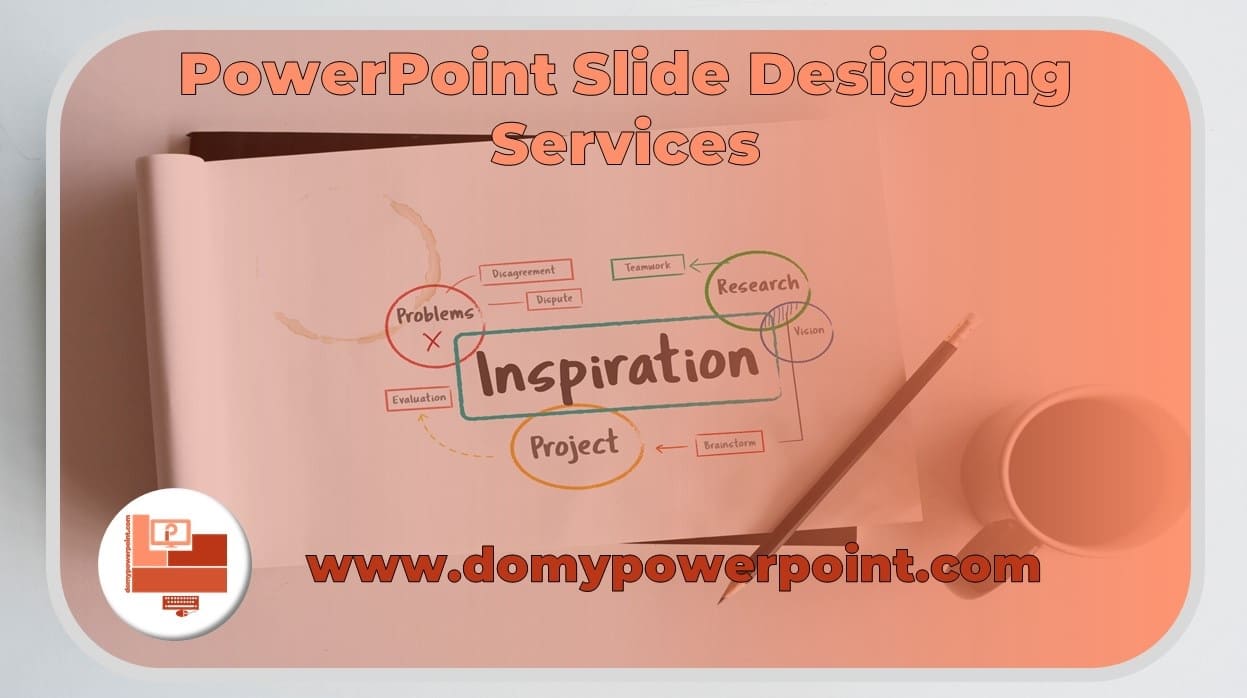You’re at the proper place if you want to become a master the art of informative presentations. From structure and examples to design advice and delivery tactics, this extensive guide will lead you through what you need to know about producing and presenting powerful insightful presentations.
We have given a summary table below covering the fundamental ideas you need to know about this presenting style so you may more quickly negotiate this content. Furthermore, should you be interested in types of presentation, make sure to review our page on presentation styles for a more all-around view.
|
Aspect |
Description |
|
Definition |
An informative presentation delivers clear, factual information to educate the audience on a specific topic. |
|
Main Goal |
To increase the audience’s understanding or knowledge of a subject without persuading or entertaining. |
|
Common Types |
Descriptive, explanatory, demonstrative, and definitional presentations. |
|
Structure |
Hook → Clear thesis → Organized sections → Visual aids → Summary & next steps. |
|
Visual Design |
Simple, clean slides with minimal text, high-contrast visuals, and consistent layout. |
|
Delivery Techniques |
Maintain eye contact, speak clearly, use pauses effectively, and engage the audience through questions or polls. |
|
Best Practices |
Know your audience, rehearse thoroughly, simplify complex info, check tech setup, and prepare for Q&A. |
|
Examples |
“How volcanoes erupt” (science class), “The history of jazz” (music lecture), “Company onboarding process” (corporate training), and more. |
|
Tools & Resources |
PowerPoint, Google Slides, Canva, free templates, flowcharts, and content outlines. |
|
Related Content |
Check out our article: Different Types of Presentations to explore narrative, persuasive, instructional and other presentation styles. |
Want a polished informative presentation? Try our custom PowerPoint design services today!
Introduction: What Is an Informative Presentation?
An informative presentation is a speech or slide show meant to teach a given audience a particular subject. Its main objectives are to provide facts, define ideas, or show how something works—without persuasion or entertainment value.
Classrooms, corporate meetings, conferences, and training courses all feature these presentations somewhat often.
Whether you are teaching students the water cycle, describing a new HR policy, or introducing cryptocurrencies to novices, the effectiveness of your presentation will rely on how rationally and simply the material is delivered.
Types of Informative Presentations
Depending on the speaker’s goal and the audience’s demands, An informative presentation could take the following many shapes. Maintaining clarity, involvement, and retention depends on selecting the correct kind. The five main forms of educational, business, and public presentations most often utilized are listed below:
1. Descriptive Informative Presentations
Clearly depicting a person, place, object, or event, a detailed informative presentation Based on factual accuracy and sensory depth, this form of presentation enables the audience to understand the subject even if they have not directly seen it.
When describing the Amazon rainforest, for example, one may demand comprehensive pictures of its abundant foliage, statistics on its species, and a summary of its environmental worth.
In academic settings, geography, history, and science classes often use descriptive presentations of this sort to help a theme come alive. In commercial or non-profit environments, they might be used to raise knowledge of certain issues or areas of interest.
This style of instructional presentation is effective as the speaker could create an engaging narrative by merging pictures and storytelling with factual knowledge.
2. Explanatory Informative Presentations
An explanatory informative presentation aims to rationally dissect difficult concepts, systems, or procedures. It is best for problems when the audience might not be conversant with the language or fundamental ideas.
Presenting “how blockchain works,” for example, would have to describe main components (blocks, nodes, hash), demonstrate how they interact, and discuss the pros and drawbacks of the system.
Sometimes this style of instructional presentation employs flow charts, animations, and analogies to try to simplify the subject. Technical fields, scholarly lectures, and even consumer education programs all find regular use for it.
The trick to success here is clarity—avoid jargon when not absolutely necessary, utilize pertinent examples, and logically structure the content so that one idea builds on the next.
3. Demonstrative Informative Presentations
Designed to teach the audience how to accomplish something, methodically, a demonstration informative presentation Unlike an expository presentation emphasizing the “what,” “why,” this kind stresses the “how.”
It’s quite useful and hands-on. One excellent resource is a “how to use a design tool like Canva for creating business flyers” guide.
Discover top Presentation Software for creating stunning presentations—explore our presentation design toolkit now!
The presenter would move across the interface, show every capability, and create a complete product right now. Often best used with screen sharing or visual assistance, demonstrative presentations are quite common in classroom settings, software demos, and training seminars.
This kind of instructive presentation helps the audience to not only grasp the procedure but also be able to copy it. Key to guarantee seamless transitions and clear directions is rehearsal and timing.
4. Definitional Informative Presentations
Especially when the issue is abstract, new, or misinterpreted, a defining Informative Presentations offers a thorough exploration of the meaning of a concept. In both professional and academic environments where accuracy and clarity are absolutely vital, these are very helpful.
Beginning with the phrase, a presentation on “psychological safety in teams,” for example, may provide supporting data, outline doable objectives for implementation, and explain its relevance in corporate culture.
Mostly dependent on academic references, case studies, and statistics, this type of educational presentation aims for legitimacy and depth. Among the often cited events are HR training, academic conferences, and public policy briefings.
Here the difficulty is making sure the definition links the idea to practical uses instead of being too academic.
5. Comparative Informative Presentations
Comparative informative presentations assist the audience make wise decisions or judgments by examining the parallels and divergent aspects between two or more subjects. A presentation contrasting “remote vs. in-office work,” for example, might address elements including productivity, team cooperation, work-life balance, and expenses.
When a choice has to be taken or when one wants to convey opposing points of view, this kind of informational presentation is perfect. It is extensively applied in political or social discussions, product comparisons, and corporate strategy meetings.
Presenters should aim to keep objective, give unambiguous evidence, and arrange their material into easily comparable groups. Bullet lists, side-by-side graphics, and charts improve understanding and assist to prevent prejudice.
Structure of an Informative Presentation
A powerful informative presentation typically follows this five-part structure:
Introduction
- Grab attention with a question, quote, or story.
- Clearly state the purpose of the presentation.
Preview
- Briefly outline the main points to be covered.
Body
- Organize your content into clear, logical sections.
- Use transitions to guide the audience.
Recap
- Summarize the key takeaways.
Conclusion
- Provide a final thought or call to action to encourage reflection or further exploration.
Visual Design Elements
An effective presentation isn’t just about what you say—it’s also how it looks. Visuals can make your content easier to understand and remember.
Best Practices:
- Use consistent fonts and colors.
- Limit each slide to one idea.
- Incorporate icons, diagrams, and charts to simplify data.
- Ensure enough white space for readability.
- Use high-contrast text and backgrounds.
Tools: Canva, PowerPoint Designer, and Prezi offer great templates to enhance visual appeal.
Delivery Techniques for Informative Presentations
Even the best-designed presentation can fall flat without strong delivery. Consider these techniques:
1. Practice Aloud to Develop a Natural Speaking Rhythm
Practicing aloud is among the most effective delivery methods available for informative presentations. Reviewing slides internally or quietly reading your script does not sufficiently equip you for the real-time pressures of presenting.
Speaking out loud enables you to build a natural rhythm, let you hear how your words flow, spot incorrect wording, and adjust your pace.
By practicing aloud, you may learn to absorb transitions, relax with technical jargon, and change your voice tone and tempo.
It’s also the best approach to prevent two common faults in presentations: seeming robotic or excessively scripted.
Practice sessions let you recognize where you could be hurried or rambling and provide you opportunity to incorporate intentional pauses for emphasis or audience reflection.
Rehearse in front of a mirror, videotape yourself, or invite a coworker to view to best optimize the advantages. This offers insightful commentary on nonverbal clues like gestures, posture, and eye contact.
These sessions will gradually help you develop muscle memory, cut filler words, and increase confidence.
Practicing aloud is, all things considered, a necessary delivery method that guarantees your informative presentation seems polished, compelling, and professional—not memorized or monotonous.
2. Make Eye Contact and Vary Your Tone
Keeping your audience interested during an informative presentation depends mostly on good eye contact and verbal diversity. Making eye contact helps your audience to feel as though you are speaking directly to them instead of reading off slides, therefore fostering trust and connection.
It also lets you evaluate comprehension, track responses, and change your pace in response to visual input.
Throughout your presentation, strive to engage several areas of the audience instead of mindlessly scanning the room or gazing at one point.
In virtual presentations, this involves speaking straight ahead toward the camera. Even with excellent material, avoiding eye contact can establish distance and lower credibility.
Not less significant is your voice delivery. A repetitive tone—regardless of the quality of your material—will soon turn people off.
Change your pace, pitch, and volume to fit the emotional intensity and focus of the subject. Slow down during difficult explanations, for instance, raise your tone when stressing something unexpected, or lower your voice while making contemplative comments.
This combination of visual and aural involvement changes your presentation from a fixed lecture into a dynamic learning environment. Eye contact and voice variation taken together build a genuine, human connection that keeps viewers attentive and engaged in your message.
3. Use Pauses Strategically for Emphasis
Among the most underappreciated yet effective delivery methods in informative presentations are strategic pauses. Particularly when you introduce a difficult concept, a significant statistic, or a striking quotation, pauses provide your audience time to process and consider what you have said. Your presentation may seem hurried or overpowering without breaks, which can cause your audience to check out or miss key points.
Dramatic pauses utilized before or after a vital point to provide impact, transition pauses to seamlessly move between subjects, and natural pauses resulting from breathing and cognition. When utilized well, these pauses provide your speech rhythm and flow and could even replace filler words like “um,” “like,” or “you know.”
Key is to practice your pauses in rehearsal. If necessary, mark them precisely in your speaker notes; fight the impulse to let anxious talk fill quiet. When deliberate, silence is not uncomfortable; rather, it’s potent.
Well-placed pauses in informative presentations—where the objective is to educate and clarify—help to emphasize what most counts. They allow ideas to settle, increase retention, and help you to project calm and authority.
4. Engage Your Audience with Questions or Quick Polls
One-way presentations run the danger of becoming lectures, but interactive components include polls and questions help to keep your audience cognitively active and involved. Whether rhetorical, open-ended, or for rapid comments, asking questions forces listeners to consider the issue closely, relate it to their own life, and remain focused.
Ask questions at important junctures or following the explanation of a difficult idea in-person. Consider, “What do you think happens when this variable changes?” or “Can anyone project the result depending on this trend?” Such exchanges convey to the audience that their ideas count and help to break the monotony.
Use technologies include live polls, chat responses, or brief quizzes in digital presentations. Real-time engagement is simple on sites like Zoom, Mentimeter, or Slido. This increases involvement as well as provides information about the reception of your message.
Interactive delivery methods help to clarify knowledge, increase memory recall, and convert an informative presentation into a participation experience. People learn better when they are participating; polls and questions provide a quick yet efficient approach to get there that.
5. Anticipate Questions and Prepare Thoughtful Answers
A competent presenter’s capacity to confidently and clearly answer inquiries is one of their strongest suit. The Q&A session may greatly affect how your audience views your knowledge either during or following the main presentation.
Create a list of probably asked questions depending on your material to be ready for this. These could have to do with facts, anecdotes, uses, or even different points of view.
Writing responses ahead of time will help you remain calm and clear under duress. To provide succinct yet instructive answers, think about applying the “PREP” framework (Point, Reason, Example, Point).
Should a question surprise you, it’s OK to answer, “That’s a great question—I’ll look into it and follow up with you after.”
Anticipating also means getting ready extra resources such references you might quickly consult, backup presentations, or extra data. This exhibits professionalism and strong knowledge of your subject.
In the framework of informative presentations, when your objective is to teach, carefully addressing questions helps to clarify uncertainty and reinforce learning. This is your chance to go farther, customize the experience, and guarantee the audience values walk-away.
6. Remember, Confidence Comes from Preparation
Complete preparation is the one most crucial basis for confident delivering in informative presentations. Although inherent charisma is important, speakers may talk with clarity and conviction by constant practice, study, and rehearsal.
Getting ready helps you to negotiate technical or verbal errors with elegance, adjust to audience reactions, and move your work fluidly.
Confidence is being so comfortable with your material that, if necessary, you can explain it in several ways, not memorizing every word. It involves knowing your timing, seeing your slides inside out, and preparing for engaging moments.
Beyond the material, preparation calls for verifying the site, testing tools, dressing correctly, and early arrival to help to lower tension. For virtual presentations, it involves a good camera, consistent internet, and a distraction-free surroundings.
Deeply prepared helps you to have more open body language, a more confident tone, and a more involved audience. Confidence is about how your preparation shows up in every element of your performance, not about how you feel. And in the realm of informative presentations such type of confidence transforms knowledge into influence.
Real-World Examples of Informative Presentations
Here are a few examples from different contexts:
Educational: A teacher explaining photosynthesis using a diagram and real-time animation.
Business: An HR manager presenting a new employee benefits program with flowcharts and FAQs.
Public: TED Talk “Inside the Mind of a Master Procrastinator” by Tim Urban—demonstrates how humor and storytelling enhance understanding.
10 Informative Presentations Examples That Work
1. How Volcanoes Erupt (Science Class)
Among the most well-known instances of an informative presentation in a classroom environment is a scientific-based theory of volcano eruption.
This kind of presentation uses neat sequencing, appropriate analogies, and clear images to teach pupils about geological processes.
The aim is to dissect difficult scientific events—such as magma creation, tectonic plate movement, and pressure building—into easily absorbed material that attracts attention.
Starting with a captivating photograph or video of an actual eruption, the speaker in a powerful informative presentation can next show a simplified schematic of the internal architecture of a volcano.
From basic knowledge to more advanced understanding, the speaker leads the audience by building explanations on the crust of the Earth, mantle, and the role of gases in generating explosions.
Visual approaches, labeled cross-sections, animations, or even actual models raise interest and recall. To highlight the variety of geological activity on Earth, the speaker might also compare many kinds of volcanic eruptions—such as effusive instead of explosive ones.
This kind of informative presentation skillfully explains a topic that could otherwise feel abstract by use of images, logical arguments, and practical examples. Done effectively, it not only provides knowledge but also motivates students to go further into Earth sciences.
2. The History of Jazz Music (Music Lecture)
A «informative presentation » on the background of jazz music combines education with pleasure in the optimum ratio. It provides to listeners the roots, development, and cultural value of one of the most influential musical genres of the 20th century.
Beginning with the historical background—early 1900s New Orleans—a superb presenter may then show how African rhythms, blues, ragtime, and European musical traditions blended to produce a unique sound.
The speaker can then perhaps go on about the worldwide importance of jazz, its impact on other genres, and its ongoing development in contemporary music.
In a public lecture or a college music concert, this «informative presentation » technique offers not only knowledge but also emotional resonance by means of sound and narrative.
A «informative presentation » on the background of jazz music blends enjoyment with knowledge in the best ratio. For those who pay attention, it offers the roots, evolution, and cultural worth of one of the most potent music genres of the 20th century.
This kind of «informative presentation » should be organized chronologically, including swing, bebop, cool jazz, and fusion among other trends. Audio samples including great musicians such Louis Armstrong, Duke Ellington, Charlie Parker, and Miles Davis will help any era to be improved. The presentation gets vivid and unforgettable when sound is included into the narrative.
Strong jazz history «informative presentation » goes beyond mere facts to show why those things are important. Particularly in African American communities, it may look at how jazz provided a means of expression, resistance, and invention.
Starting with the historical background—early 1900s New Orleans—a great presenter may then illustrate how African rhythms, blues, ragtime, and European musical traditions combined to create a distinct sound.
The speaker can perhaps stay on about the global relevance of jazz, its influence on other genres, and its continuous evolution in modern music. This «informative presentation » approach gives not only knowledge but also emotional resonance via sound and story in a public lecture or a college music program.
3. Company On boarding Process (Corporate Training)
In the business sector, an informative presentation is a must-have instrument for properly introducing new staff members. To new employees, a presentation emphasizing the corporate on boarding process helps to convey the values, structure, expectations, and culture of the firm.
Usually including many sections, this kind of informative presentation covers HR policies, IT tools, security procedures, performance assessment methods, departmental overview, and business history and mission. Key persons and departments are introduced.
The clarity, interaction, and practicality of this informative presentation help to make it successful For example, walk throughs of internal software platforms support daily operations while visual aids like organizational charts help new recruits grasp reporting systems.
Important also are guidelines on corporate etiquette, code of behavior, and health and safety. A well-run on boarding presentation could include movies, live demos, and even tiny tests to keep the session engaging.
Moreover, this «informative presentation » might provide staff members readily downloadable tools including checklists, contact directories, and FAQs.
The ultimate goals are less uncertainty, more confidence, and faster integration speed. Establishing the tone for long-term employee success, a good on boarding informative presentation transforms what may be a scary first week into a warm and orderly experience.
4. How to Use Canva for Beginners (Tech Demo)
In the digital era of today, an informative presentation aimed on educating beginners how to utilize Canva—a well-known graphic design tool—is rather important.
In schools, business seminars, or content creation boot camps when non-designers are expected to produce aesthetically pleasing documents, this kind of presentation is perfect.
Starting with Canva’s goal of making design accessible to everyone regardless of technical ability, a competent presenter will then move on
After that, the «informative presentation » can lead the audience through the user interface covering element customizing, dashboard, template selection, drag-and-drop tools. Here, clarity depends on screenshots or live screen sharing.
Using Canva’s included templates, the presenter may show how to design a simple poster, social media image, or presentation slide. Explaining the variations between free and paid features and how to export designs in other formats helps also in line with the informative presentation.
Including ideas on color theory, typeface, and layout design to increase visual impact makes this presentation much more worth-while.
Finishing with a live design challenge or Q&A session will boost involvement and memory. In the end, this informative presentation helps participants to freely and with confidence produce professional-looking images, a useful ability in almost any sector modernly.
5. Benefits of Meditation for Mental Health (Health Seminar)
In many various contexts—businesses, homes, or community centers—an informative presentation on the benefits of meditation is a terrific way to encourage wellness and self-care.
The audience should be informed on how meditation can assist to reduce stress, increase attention, and enhance general mental wellbeing.
Usually beginning with explaining meditation and summarizing the science behind it—how mindfulness and breath awareness affect the parasympathetic nervous system, lower cortisol levels, and promote emotional control—this talk moves.
The informative presentation might mix research-based knowledge from psychology studies and neuroscience to demonstrate the obvious advantages of meditation on the brain.
Visual tools such brain scans or charts showing reduced anxiety levels after meditation help to increase credibility.
The speaker can also guide the audience through a quick breathing exercise presenting many kinds of meditation including mindfulness, loving-kindness, or body scan, therefore giving them a practical experience.
In this regard, a good informative presentation also provides useful guidance on how to include meditation into a daily schedule, especially for hectic people.
Combining research, narrative, and practice helps this presentation not only informs but also inspires transformation. Delivered deliberately, it can result in long-lasting changes in lifestyle and a better knowledge of mental health techniques.
6. How the Stock Market Works (Financial Literacy Seminar)
Knowing the stock market may be intimidating, hence an informative presentation on this subject is rather helpful—especially in a world when personal financial knowledge is becoming more and more crucial.
This kind of presentation seeks to simplify a complicated system and provide the audience with a fundamental knowledge of stock market operation.
Usually starting with a simple definition—a venue for buyers and sellers trading publicly traded company shares—it From there, the informative presentation can look at important ideas such stock exchanges (e.g., NYSE, NASDAQ), stock indexes (e.g., S&P 500), and how supply and demand effect stock prices.
The speaker could utilize analogies, including comparing the stock market to an auction house, to enable listeners connect to abstract ideas. Moreover showing the dynamic aspect of the market are graphs showing prior development trends or volatility in response to foreign events.
Furthermore, this informative presentation can clarify the part dividend and capital gains play as well as how people invest using ETFs, retirement plans, or brokerage accounts. Interactive components such as tests or a virtual investing simulation help to increase involvement.
By the conclusion of this informative presentation the audience should be more secure in their knowledge of investing, be aware of dangers and techniques, and maybe inspired to investigate financial planning tools and resources.
7. The Water Cycle Explained (Elementary School)
One of the most important scientific ideas taught in early education, the water cycle fits very well for an interesting and instructive informative presentation.
Designed mostly for young students, this presentation dissectes the ongoing flow of water on, above, and below the surface of the Earth.
The informative presentation clarifies the four main phases: evaporation, condensation, precipitation, and collecting by means of images and age-appropriate terminology.
A teacher may start by, for instance, displaying a cartoon animation of the sun heating a body of water to induce evaporaction.
Illustrations of clouds accumulating (condensation), rain pouring (precipitation), rivers and seas being restored (collective) follow from this.
Songs, interactive diagrams, or even practical experiments like observing water boil and condense on a lid can help reinforce every phase of the cycle.
The power of this educational presentation is found in its capacity to give science magical relevance. Children start to view their daily surroundings—rain, puddles, clouds—in a fresh way.
Furthermore, the water cycle becomes a fundamental idea for next scientific education as it is related to more general subjects such weather, ecosystems, and climate. In the end, this informative presentation fosters early scientific thinking and curiosity.
8. Introduction to Cybersecurity (IT Awareness Session)
In the modern digital first world, an informative presentation on cybersecurity is not only pertinent but also necessary.
This presentation informs everyone on the fundamental concepts of being safe online regardless of the audience—parents, students, or office workers.
Usually beginning with describing cybersecurity as the activity of preserving systems, networks, and data from digital threats, it The informative presentation then covers usual risks including phishing, malware, ransomware, and social engineering.
Using real-world case studies, such a well-known data breach or ransomware attack, the speaker might demonstrate how detrimental poor cyber hygiene can be.
From there, the webinar explores best practices: using strong passwords, turning on two-factor authentication, identifying questionable messages, and frequently updating applications.
Diagrams and infographics could explain how attacks work and how systems are defended using firewalls, antivirus software, and encryption.
Interactive components—such as simulated phishing emails or password strength checks—help to make the content more appealing and practical.
This «informative presentation » empowers instead of merely instructing. Participants leave with useful ideas they may immediately apply in their digital lives. With the rising cyberthreats, a well-executed informative presentation on cybersecurity might protect not only individuals but also whole businesses.
9. How Vaccines Work (Public Health Talk)
Promotion of public health consciousness largely depends on informative presentation on the mechanics of vaccinations.
This presentation demystizes the science underlying one of the most significant medical achievements in history whether in line with a school or community health project or during a pandemic.
Usually starting with defining the core idea of immunity—how the body fights against infections—it then highlights the main actors of the immune system: white blood cells, antigens, and antibodies.
Then, a strong informative presentation will illustrate how vaccinations mimic illness to boost the immune system and cause the body to create a defensive reaction free from disease causing.
The speaker can demonstrate the several ways in which various forms of vaccines—such as mRNA, inactivated virus, vector-based—function by means of animations or simple images.
Stressing actual achievements like the elimination of smallpox or the control of polio will help to increase vaccination confidence.
Managing false information and misinterpretation is also rather important for this informative presentation . Using peer-reviewed research and evidence-based data, the speaker might emphasize the need of herd immunity and assist to dispel frequent misunderstandings.
Combining scientific accuracy with understandable language and emotional appeal enables this informative presentation create trust and understanding, therefore enabling informed decision-making and better communities.
10. The Life Cycle of a Butterfly (Kindergarten Science)
For a young audience, the life cycle of a butterfly is among the most fascinating topics; it’s also a superb model of an informative presentation aimed to blend visual learning, biology, and storytelling.
Showing how a butterfly passes four primary stages—egg, larva (caterpillar), pupa (chrysalis), and adult—this presentation teaches children the concept of metamorphism. Time-lapse movies, real-life images, or even striking graphics assist to define every stage.
Beginning with a quirky story about a “baby caterpillar” hatching and eating leaves, the informative presentation would captivate the young audience.
It then goes to explain how the caterpillar forms a chrysalis and transforms into a butterfly. Using props—such as paper models or fluffy toys for every life stage—adds an interactive element that helps to simplify memorization of the process.
Teachers could include a hands-on activity such as painting the life cycle or observing caterpillars in a classroom.
More than just teaching biology, this informative presentation stimulates curiosity, empathy, and patience. Children grow to value science and the environment more deeply by seeing a live creature experience such dramatic transformations.
Structured properly, this «informative presentation » creates the foundation for amazement and lifetime learning.
Informative Presentation Structure: Step-by-Step Guide
1. Start with a Hook
Starting with a great hook is crucial as the tone of any informative presentation determines what follows. An interesting start that piques the audience’s curiosity and generates topic interest is a hook.
Depending on your topic and audience, this may take many different forms—an interesting question, a startling statistic, a brief tale, even a strong quotation.
This stage aims to challenge the audience’s expectations and cause them to lean in, therefore psychologically preparing them for what they are about to discover.
In an informative presentation on climate change, for example, a strong hook would be:
“Did you know the last eight years have been the hottest on record?”
Alternatively for a talk on sleep science:
“You’ll spend nearly a third of your life asleep—but most people still don’t know why we dream.”
These sorts of openers not only draw attention but also intellectually or emotionally connect with the audience. A well selected hook generates momentum, stimulates interest and provides a backdrop for your material.
Starting your informative presentation with a deliberate hook helps you to engage your audience and create expectation. This is a calculated initial step that guarantees your message will have the impact it merits.
2. Share a Clear Thesis
Presenting a clear thesis statement comes next in a good informative presentation once you have grabbed your audience.
This is a two-sentence or one that precisely outlines the topic of your presentation and what your audience should anticipate to gain.
Consider the thesis as the North Star of your presentation; it shapes the organization, establishes the limits, and clarifies your major point of view.
In an informative presentation, clarity is very vital. Your thesis should be directed, simple, and specific.
Saying, “This presentation is about technology,” for instance, should be replaced with, “This presentation will explain how artificial intelligence is transforming modern healthcare, from diagnosis to treatment planning,” says This gives the viewers a clear grasp of the issue as well as the worth of the material they are about to come across.
A strong thesis also helps your material stay on target and concentrated. It guarantees that every point you add subsequently reinforces this fundamental theme, therefore avoiding the typical mistake of straying off-target.
Moreover, stressing or reiterating the thesis throughout the presentation—especially before transitions—helps the audience follow along and remain interested.
Basically, each informative presentation starts with a strong premise and maintains your audience in line as well as yourself.
3. Break Down Your Points into Clear Sections
Any informative presentation depends mostly on your ability to arrange and clarify your main ideas.
This is why you should divide your material into sensible, logical chunks. This helps you to communicate difficult material in a digestible fashion as well as improves audience understanding.
Usually, for most informative presentations three to five major themes are perfect. This spectrum lets you explain in great detail without boring your audience too much in depth or clarity ratio.
Every part should be succinctly explained and feature case studies, data, or examples bolstering the point of view.
In a presentation on renewable energy, for instance, your divisions may be (1) kinds of renewable energy, (2) advantages of switching to renewables, and (3) obstacles and future possibilities. Subpoints, statistics, or images will then help each of these sections to be enlarged.
By means of signposting language such “First,,” “Next,,” and “Finally,” the audience may follow the course of your presentation.
Each segment can also be previewed at the beginning and finished with a mini-summary. In the end, separating your informative presentation into clearly defined chunks improves understanding and professional integrity of your message.
4. Use Visuals
In every informative presentation, visuals are a great tool that significantly contribute to audience involvement and understanding.
Visual information is processed by our brains far faster than word, hence images are crucial for showing intricate concepts, statistics patterns, and links between ideas
From images and infographics to graphs, charts, and even short video clips, well selected visuals may help your information come to life and support your major points of focus.
If your informative presentation centers on the global water scarcity, for example, incorporating a map of water-stressed places or a time-lapse of declining water supplies adds context and urgency in ways words cannot.
Still, images should be employed deliberately—not only for decoration. Every graphic component has to be clearly meant to explain, underline, contrast, or summarize. Steer clear of stuffing presentations with too much text or photos as this will overwhelm rather than instruct.
When utilized well, images in an informative presentation improve clarity, boost retention, and keep your audience visually and intellectually active all through your presentation.
5. Close with a Summary and Next Steps
An informative presentation ends with your last opportunity to underline your points of view and make a lasting effect. A great ending starts with a succinct overview of the key ideas addressed.
This strengthens knowledge and aids in audience memory of the key concepts you have presented. Repeating the theory in view of the data also provides a pleasing sense of coherence and closure.
After the overview, you should include a clear list of calls to action or next steps. This might call for urging more reading, recommending tools or resources, or just asking the audience to consider how the material relates to their own life or job.
If your informative presentation focused on mental health in the office, for instance, your next actions can be linking to staff wellness initiatives or pushing honest talks among colleagues.
A solid ending also allows you to emotionally re-connect with your audience—perhaps by going back to your initial hook or by including a last striking quotation. Finally thanking them and inviting questions might help to promote involvement and communication.
The end of an informative presentation is essentially a launching pad for further education, thought, and action rather than merely a recap.
Best Practices for Creating Informative Presentations
Keep Slides Simple
Maintaining clean and uncluttered slides is one of the most often disregarded recommended practices in building an informative presentation.
Although packing every slide with thorough text, bullet points, and complex images is enticing, this usually results in cognitive overload and takes focus away from the speaker.
A well-designed slide should enhance your spoken material rather than take the stage.
Using minimum text, neat images, and consistent style, try to highlight one major concept on each presentation. Choose big, legible letters and lots of white space.
When suitable, high-quality graphics, symbols, or charts can substitute paragraphs of explanation. Steer clear of complex words, distracting animations, and crowded backdrops weakening your message.
Recall that slides are more of visual aids than texts. Should you be depending mostly on your slides to provide your material, you are losing the chance to engage your audience by means of presence, voice, and narrative.
Simple slides let the audience concentrate on the concepts you are presenting, the truly important things. Simply said, every effective informative presentation depends on simplicity in slide design to help you transmit clear, professional, and powerful ideas.
Rehearse Multiple Times
Whether your material is excellent, a good informative presentation mostly depends on confident delivery—and that comes with practice.
Several times of practice helps you to improve your timing, predict challenging transitions, hone your tone, and guarantee a seamless flow from start to finish.
It also allows you to find problematic language, confusing sections, or times when your pictures contradict your voice.
Start your rehearsals by yourself, concentrating on internalizing the content and developing your comfort with your delivery cadence. To make sure you stay inside your time restriction, use a stopwatch.
Then start practicing in front of a mirror or camera yourself to evaluate clarity, body language, and speech modulation.
At last, ask for particular comments when presenting before a small test audience—friends, coworkers, or mentors.
Many rehearsals can also help you lower nervousness and get ready for unanticipated events as missing a slide or answering a challenging question.
Rehearsing is about perfecting the tempo, honing the transitions, and making your informative presentation feel natural, confident, and persuasive—not only about memorizing.
Check Technical Setup
If you haven’t taken time to examine your setup, technological problems might ruin even the most well-prepared informative presentation.
Test all technological components completely before the actual presentation, particularly if it takes place somewhere new or incorporates digital platforms.
This covers your presentation file most essential, the projector or screen, clicker, microphone, speakers, Wi-Fi connection, and more.
Make sure your slides show exactly the system of the venue; typeography, formatting, photos, and videos may all look differently if you are jumping from one device or software version.
Check integrated components to be sure they work as expected. To make sure you are protected should file corruption or device failure, always provide backup alternatives including a PDF copy of your slides, a copy on a USB, or access via cloud storage.
Should your informative presentation be virtual, first test your webcam, screen sharing, and audio quality. Consider quickly compiling a check-list to go over before starting.
Technical preparation ensures perfect delivery of your information, thereby allowing the audience to focus on your message instead of any disruptions and shows professionalism.
Always Be Ready for Q&A
A well-run Q&A session is the best opportunity to demonstrate understanding of your topic and involve your audience more directly.
Although your informative presentation largely delivers organized knowledge, the Q&A enables you interact dynamically, clarify topics, and have a dialog.
Being ready for this section shows that you not only understand your subject but also welcome comments and conversation.
Think on common or challenging questions your audience could have to be ready. Practice replies aloud and prepare additional slides or documents you might need reference to.
Particularly in a professional or academic setting, it also helps you to investigate recent developments or debates on your topic.
During the session, pay great attention to every question; repeat any required (especially for a larger audience) and answer concisely and exactly.
It is better to be honest and offer to follow up later than to presume if you are not sure about an answer. Apart from highlighting the value of your informative presentation, a confident and courteous Q&A strongly reflects your professionalism and credibility.
FAQs (People Also Ask)
What are examples of informative presentations ?
Informative presentations include:
- Explaining a process (e.g., how to file taxes),
- Demonstrating a product (e.g., using Excel filters),
- Describing a place or event (e.g., a travel vlog),
- Defining a term (e.g., “sustainable architecture”).
How do you give a good Informative Presentations ?
Research your topic thoroughly.
Organize your content logically.
Use visuals to reinforce key ideas.
Practice to build confidence.
Engage the audience with relatable examples.
What is the structure of an Informative Presentations?
Introduction, Preview, Body, Recap and Conclusion
What are examples of Informative Presentations ?
Effective Informative Presentations include subject explanations (explaining bitcoin to novices), demonstrations (showing how to use software), descriptive presentations (describing historical events), and defineational presentations (clarifying technical terms). For example, Tim Urban’s “Inside the mind of a master procrastinator” TED Talks show how deftly complicated material may be communicated using simple images and narrative.
How to give a good Informative Presentations ?
Research extensively to become a subject-matter expert; organize material logically with a clear beginning, middle, and end; use visual aids strategically to reinforce key points; practice delivery to ensure confident, conversational tone; and include examples and analogies to make difficult information accessible. Anticipate questions from the audience and ahead of time create succinct responses.
What is the structure of an Informative Presentations ?
The five-part framework of a well-organized Informative Presentations is 1) Captivating opening that notes the goal, 2) Preview covering key ideas. Body material that presents information in logical chunks; recap that supports important points of view; and draw a clear call-to-action or provocative finish that links back to the opening.
What Defines an Effective Informative Presentation ?
An effective informative presentation delivers clear, well-structured, and engaging content that meets the audience’s knowledge needs. It avoids jargon, includes examples, and uses visuals to clarify points.
Related Topics to Explore
To dive deeper, check out these related articles:
9 Types of Presentations You Must Know
How to Design a Pitch Deck that will impress investors
Conclusion
Essential instruments in public communication, business, and education are Informative Presentations.
Presenting ideas that enlighten, involve, and stick in your audience’s memory starts with clarity, organization, and design.
Use the tools, ideas, and templates in this book to improve your next presentation; furthermore, be sure to review our linked materials for even more professional advice.



